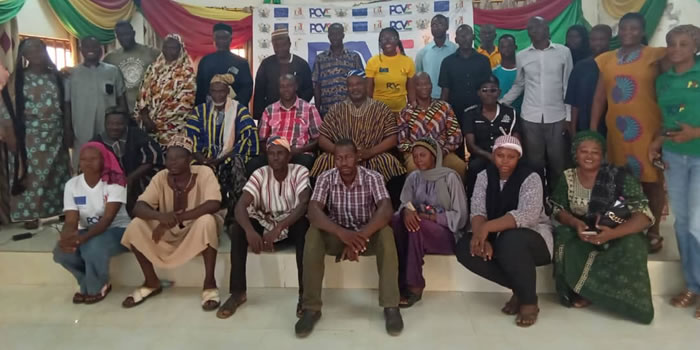

DISABILITY
Vulnerability
Persons with disabilities (PWD) have been defined as those who are unable to or are restricted in the performance of specific tasks/activities due to loss of function of some part of the body as a result of impairment or malformation (Ghana Statistical Service, 2012). As a result, PWDs face a wide range of life challenges because disability, in whatever form or type, can reduce an individual’s ability to function to his/her full potential.
Disability can limit an individual’s full participation in a number of activities in life. According to the World Health Organisation (WHO) there are more than 600 million PWDs in the world, of which approximately 80.0 percent live in low-income countries (Ayiku, 2012).
This section analyses PWD in the Kumbungu District in relation to other socio-economic issues.
Population with Disability
Population by type of locality, disability type and sex is presented in Table 6.1. The data shows that there are 600 persons with some forms of disabilities in the Kumbungu district. This constitutes 1.5 percent of the district’s population. The proportion of males with disability (1.6%) is almost equal to that of the females (1.5%).
Type of Disability
Females reported the highest number of persons in sight (112), hearing (71) and emotional (38) disabilities, whilst males are high in speech (52), physical (82), intellectual (38) and other (46). Generally, people with sight and physical disabilities are in the majority in the district. 6.4 Distribution by Type of Locality According to the 2010 Population and Housing Census, Kumbungu district is made of entirely rural communities, hence, persons who reported to have any of the forms of disabilities came from rural communities.
Disability and Economic Activity
This section focuses on persons 15 years and older with disability by economic activity status and sex in the district and the data is presented in Table 6.2.
Four hundred and forty-four people out of the total population of 21,477 have various forms of disabilities, with 61.7 percent of them employed, 0.7 percent unemployed and 37.6 percent are economically not active. Among the various forms of disabilities, persons with sight disability reported to be more employed (50.9%), with females and males constituting 47.1 percent and 55.3 percent respectively.
People reported to be physically disabled and employed are 61.7 percent. Males with intellectual disability who are unemployed recorded 3.8 percent. Persons with sight disability again recorded the highest proportion (48.5) of economically not active, with female proportion (51.7) higher than that of males (44.7%).
Disability and Education
Table 6.3 presents the population three years and older by disability type, level of education and sex. Among the total population of PWDs three years and older 441 of them never attended school, 13 attended pre-primary school, 90 have basic education, 18 have secondary education or higher.
Out of the 18 PWDs who have secondary education or higher, physical disability constituted 9, sight 7 and 6 emotional disabilities. Generally, more male PWDs are educated than their female counterparts.
Date Created : 11/21/2017 6:21:48 AM










 facebook
facebook
 twitter
twitter
 Youtube
Youtube
 +233 593 831 280
+233 593 831 280 0800 430 430
0800 430 430 GPS: GE-231-4383
GPS: GE-231-4383 info@ghanadistricts.com
info@ghanadistricts.com Box GP1044, Accra, Ghana
Box GP1044, Accra, Ghana